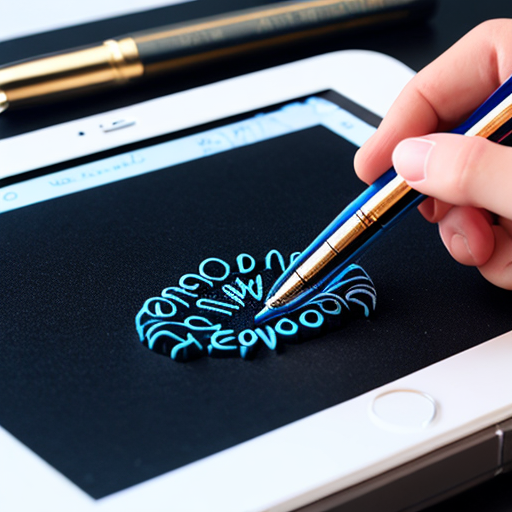I. Introduction
A: Hook: Unleash your inner Picasso with the perfect 3D pen
- Grab the reader's attention by emphasizing the creative possibilities of 3D pens.
B. Briefly explain the growing popularity and versatility of 3D pens
- Discuss the growing use of 3D pens in art, design, and DIY projects.
- Highlight how they allow artists and hobbyists to bring their ideas to life in three dimensions.
2. Understanding the 3D pen
A. What is a 3D pen?
- Define a 3D pen as a handheld device that uses molten plastic filament to create three-dimensional objects.
- Explain how it works as a combination of traditional drawing and 3D printing.
B. How does a 3D pen work?
- Describe the inner workings of a 3D pen including the heating element, plastic filament, and extrusion process.
- Discuss the role of temperature control in controlling plastic flow and solidification.
c. Advantages of using a 3D pen for art and design projects
- Discuss the benefits of using a 3D pen, such as versatility, portability, and instant physical object creation.
- Highlight how 3D pens can be used for prototyping, model making, artistic expression and educational purposes.
III. Things to consider when choosing a 3D pen
A. User experience and comfort
- Discuss ergonomic design, lightweight options, and comfortable grip for extended use.
- Highlight the importance of a user-friendly interface and intuitive controls.
B. Temperature control and adjustable settings
- Explain different filament types and the significance of temperature control for desired results.
- Discuss the benefits of pens with adjustable speed and extrusion settings for precise control.
C. Filament consistency and diversity
- Provide an overview of filament materials such as PLA, ABS, and specialty filaments.
- Highlight the importance of choosing a pen that supports a wide range of filament options.
D. Speed and accuracy
- Discuss how speed settings affect filament flow and consistency.
- Emphasize the importance of pens with adjustable speeds for a variety of projects, from quick outlines to complex details.
IV.. Explore different 3D pen models
A. Review and compare popular 3D pen brands/models
- Provide an overview of leading brands such as XYZprinting, 3Doodler, and Mynt3D.
- Compare their features, performance, and user reviews to help readers make informed choices.
B. Highlight the unique features and advantages/disadvantages of each
- Discuss specific features such as OLED display, auto-retract function and compatibility with third-party filaments
- Mention any significant advantages or limitations of each pen model based on user experience.
C. Provide recommendations based on different user needs and preferences
- Offer recommendations for beginners, advanced users, artists and professionals, considering factors such as price range and functionality. Price range and functionality
V. Tips and Tricks for Getting the Most Out of Your 3D Pen
A. Basic 3D pen techniques for beginners
- Explain basic techniques such as drawing straight lines, curves, and shapes.
- Provide step-by-step instructions for making simple objects such as cubes, pyramids, or vases.
B. Advanced tips for achieving intricate designs and details
- Discuss techniques such as layering, shading, and adding texture to enhance the visual appeal of 3D pen creation.
- Offer guidance in troubleshooting common problems such as filament clogging or inconsistent extrusion.
c. Inspire creativity with project ideas and examples
- Share project ideas for different skill levels such as jewelry, statues, architectural models or customized decorations
- Display inspiring examples of 3D pen artwork from famous artists or online communities.
VI. Safety precautions and maintenance
A. Important safety guidelines for using a 3D pen
- Emphasize the need for adult supervision, especially when used by children.
- Discuss safety precautions regarding high-temperature components and possible burns.
B. Tips for proper maintenance and care of your 3D pen
- Explain how to clean the pen tip and remove filament residue.
- Provide instructions for changing or replacing the filament cartridge and storing the pen safely.
VII. Conclusion
A. Briefly write the key points for choosing the perfect 3D pen
- Narrow down to consider things like user experience, temperature control, filament compatibility and speed.
B. Encourage readers to express their creativity and embrace possibilities
- Inspire readers to explore the endless possibilities of 3D pen art and express their unique ideas.
This comprehensive guide provides detailed information, practical tips, and inspiring examples to help readers choose the perfect 3D pen and unlock their inner Picasso.

.png)
.png)

Post a Comment
If you have any doubts, please let me know.